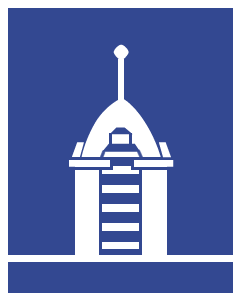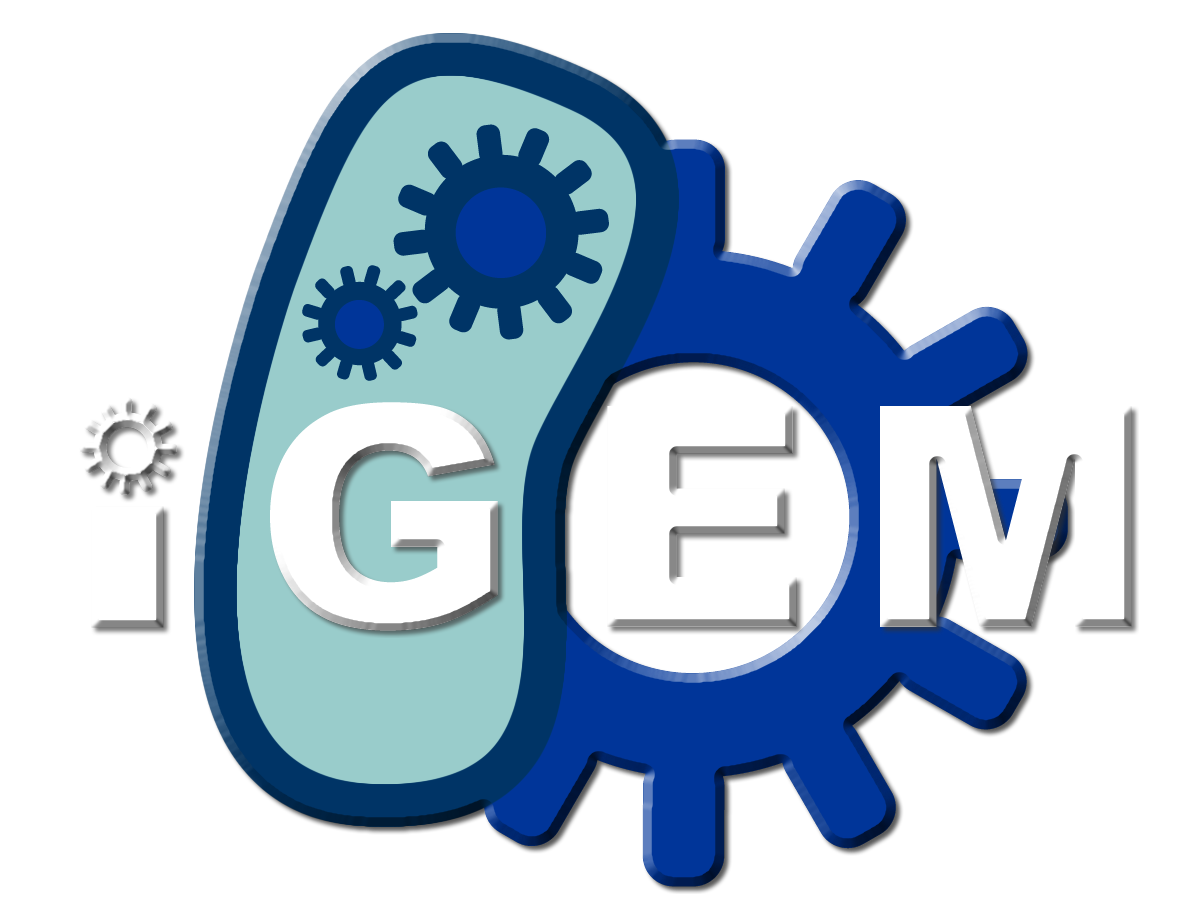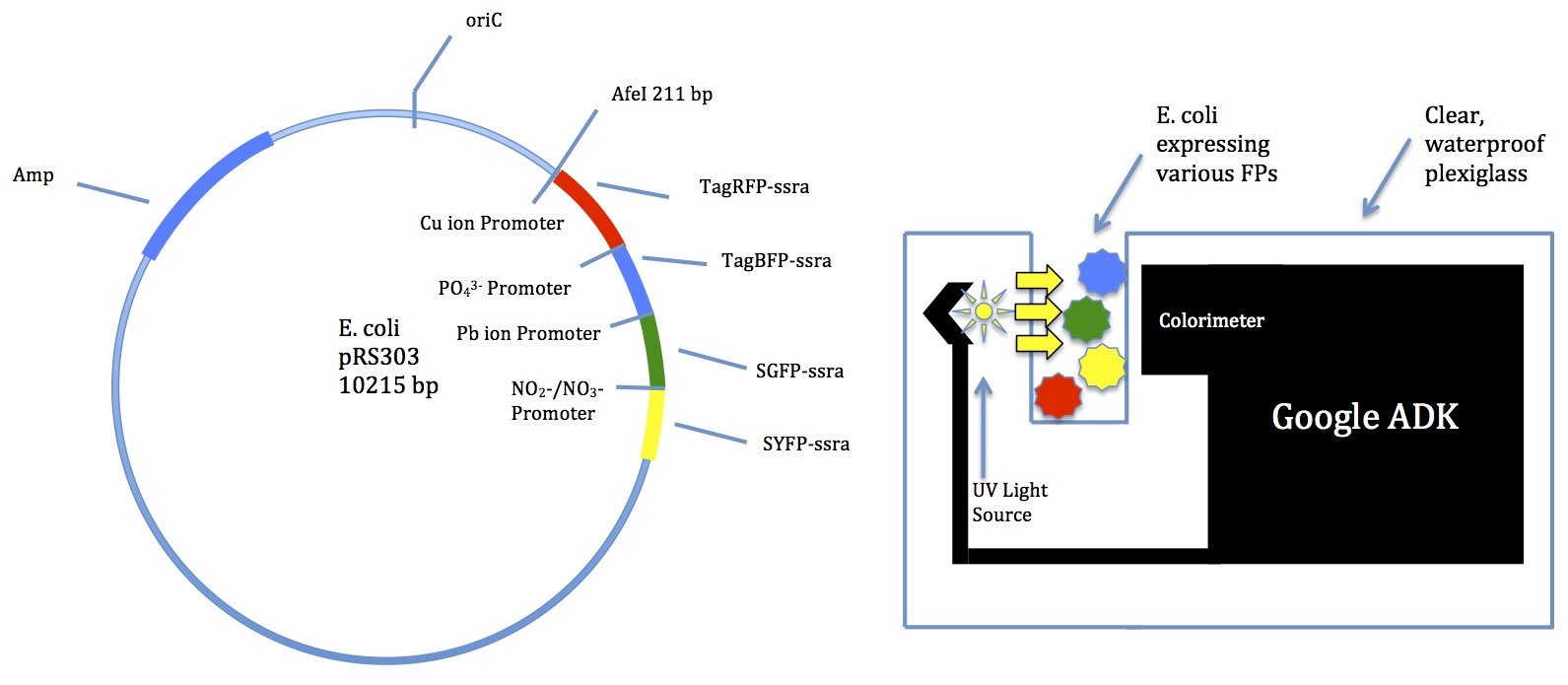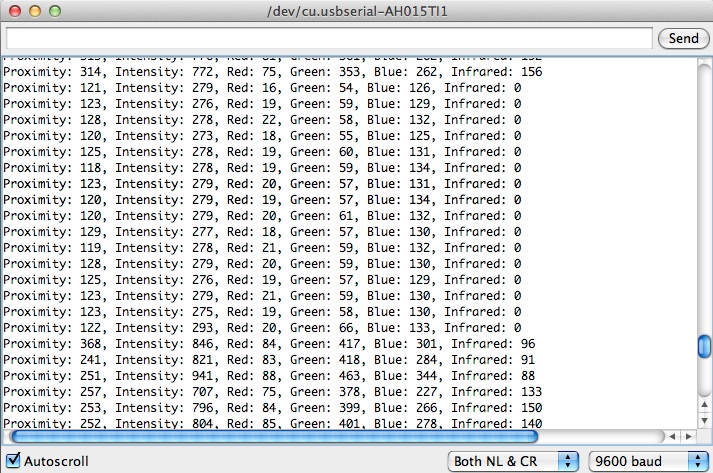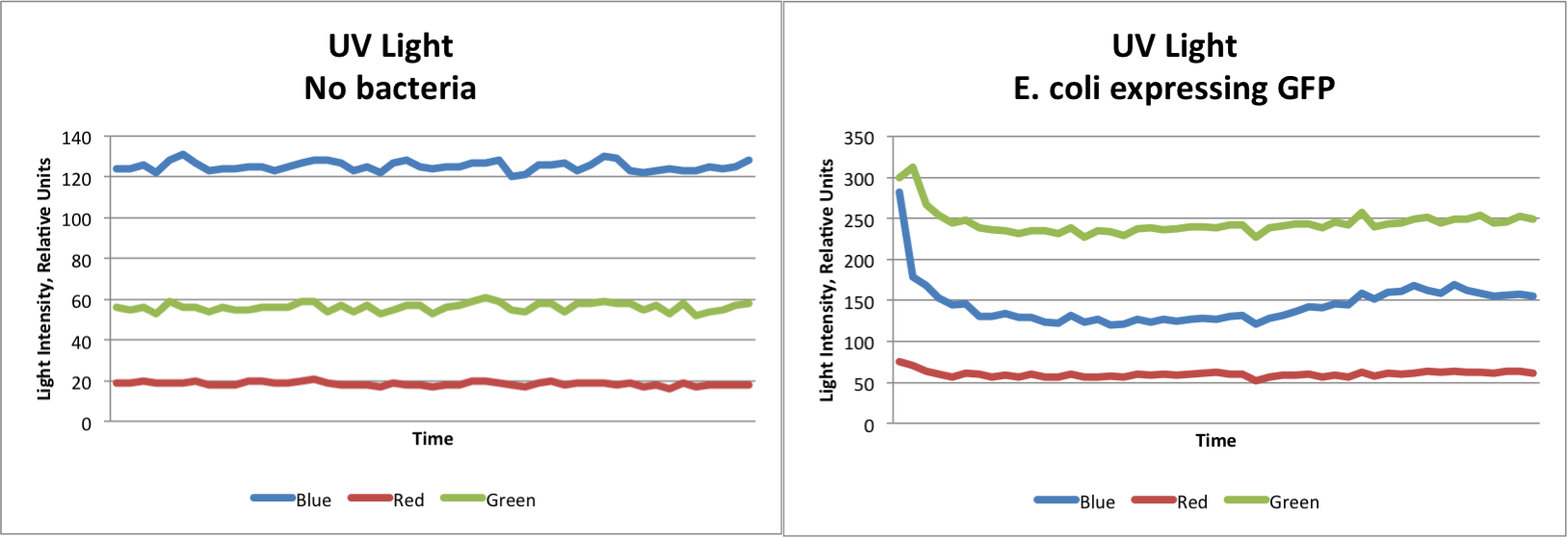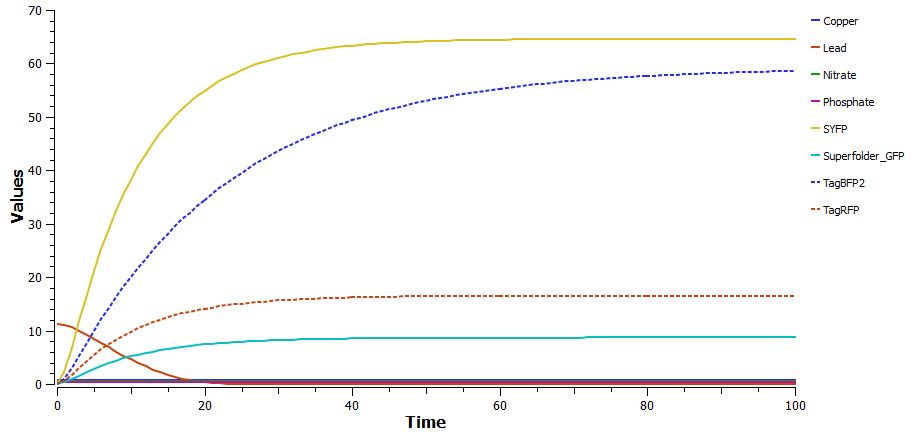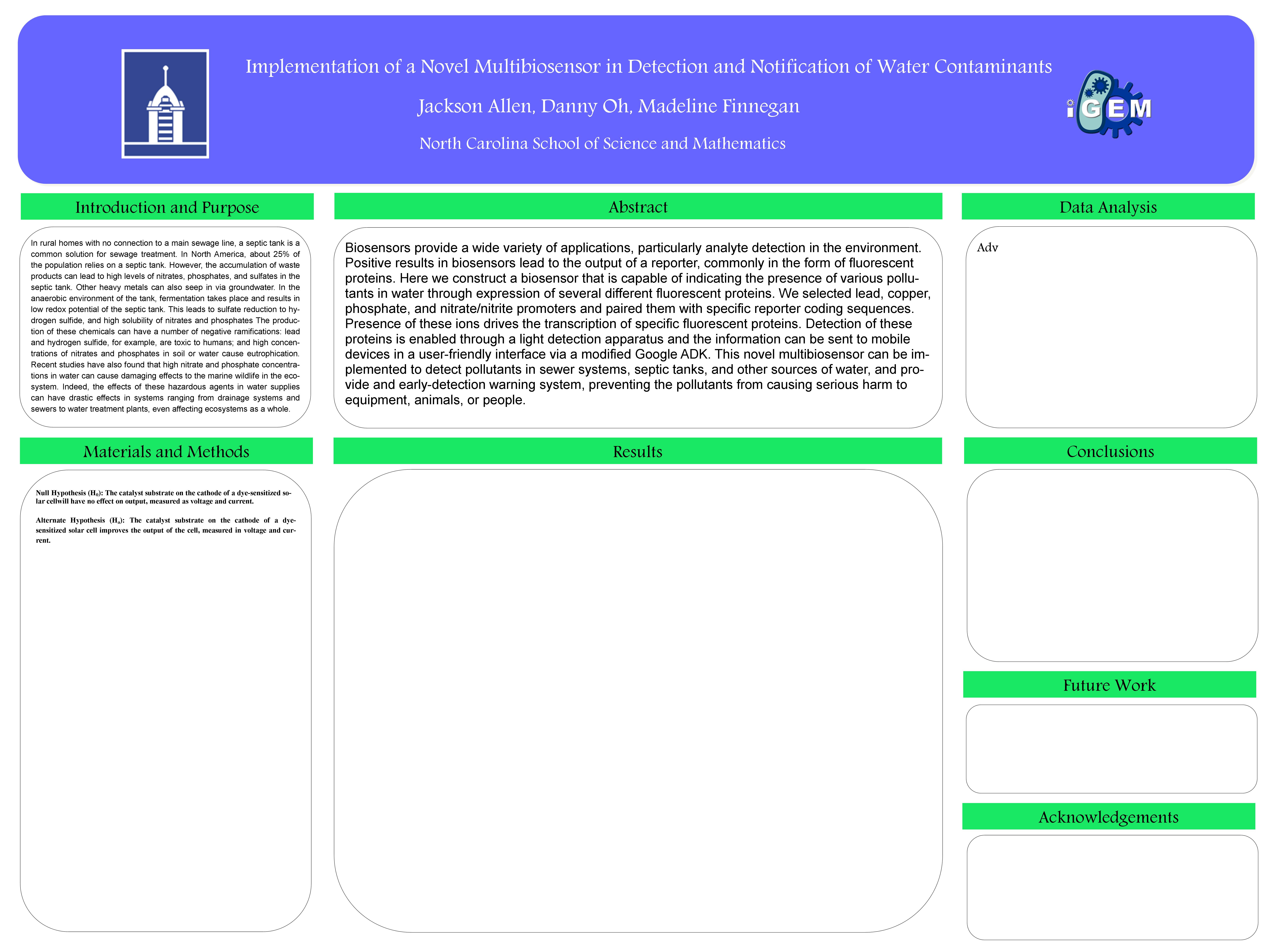Team:NC School of Sci Math/Lab Notebook
From 2013hs.igem.org
(Difference between revisions)
Jack Allen (Talk | contribs) |
|||
| (70 intermediate revisions not shown) | |||
| Line 1: | Line 1: | ||
| + | <html><head> | ||
| + | <style type="text/css"> | ||
| + | |||
| + | h3 | ||
| + | { font-color: #00008B; } | ||
| + | |||
| + | #bodyContent h2, h2, #maincontent h2 | ||
| + | { margin-top: 1em; | ||
| + | margin-bottom: 0.95em; | ||
| + | font-size: 110%; | ||
| + | padding-bottom: 4px; } | ||
| + | |||
| + | #maincontent ul, #maincontent li | ||
| + | { list-style-type:square; | ||
| + | list-style-image:url('https://2013hs.igem.org/wiki/skins/igem/bullet.gif'); } | ||
| + | |||
| + | #maincontent ul | ||
| + | { margin: 0px 22px; } | ||
| + | |||
| + | </style> | ||
| + | </head></html>{{NotebookUpper}} | ||
{{NCSSM_iGEM_13| | {{NCSSM_iGEM_13| | ||
| + | Content= | ||
__NOTOC__ | __NOTOC__ | ||
| + | <!-- | ||
| + | |||
| + | ============================================================================================ | ||
| + | *** PLEASE NOTE: *** | ||
| + | |||
| + | The contents and design of this wiki are published under the GNU Free Documentation License. You are granted the right to copy and modify our work, but you must publish your work under the same type of license while recognizing us the authors. | ||
| + | |||
| + | Jakob Kreft, Tim Heinemann, Lorenz Adlung | ||
| + | |||
| + | ============================================================================================ | ||
| + | |||
| + | /--> | ||
| + | ===Lab Notebook=== | ||
| + | <html><h2><a name="Planning" style="color:#00008B;">Planning and Development</a></h2> | ||
| + | <h4><a style="color:#00008B; float:right;" name="01/11/2013">01/11/2013</a></h4></html> | ||
| + | |||
| + | <b>Brainstorming for project ideas </b> | ||
| + | <br /> | ||
| + | *LDL-cholesterol biosensor | ||
| + | *Ocean salinity regulator (especially for coral reefs) | ||
| + | *Water contaminant multibiosensor | ||
| + | |||
| + | <b style="margin-top:2px;">More research</b> | ||
| + | *Find related projects that have been completed | ||
| + | *Obstacles? | ||
| + | *BioBricks? | ||
| + | *Presentations in 3-4 weeks | ||
| + | |||
| + | <html><h4><a style="color:#00008B; float:right;" name="01/18/2013">01/18/2013</a></h4></html> | ||
| + | |||
| + | <b>Discussions of each project</b> | ||
| + | <br /> | ||
| + | *LDL-cholesterol biosensor | ||
| + | **Could be used as a blood test | ||
| + | **Blood sugar monitor-like device | ||
| + | **Hard to measure any color change in blood | ||
| + | *Ocean salinity regulator (especially for coral reefs) | ||
| + | **Need a lot of bacteria | ||
| + | **Environmental concerns | ||
| + | **Bacteria can do well in coral reefs | ||
| + | *Water contaminant multibiosensor | ||
| + | **Several Biobrick promoters for common contaminants | ||
| + | **Usage in sewer tanks | ||
| + | **Many different colors of fluorescent proteins | ||
| + | **Could incorporate newer technology for better color-sensing | ||
| + | **Will look up data on promoter/FP expression | ||
| + | |||
| + | <html><h4><a style="color:#00008B; float:right;" name="02/01/2013">02/01/2013</a></h4></html> | ||
| + | |||
| + | <b>Presentations</b> | ||
| + | *All ideas sound promising | ||
| + | *Meet next week to decide which idea to pursue | ||
| + | |||
| + | <html><h4><a style="color:#00008B; float:right;" name="02/08/2013">02/08/2013</a></h4></html> | ||
| + | |||
| + | <b>Decision on project</b> | ||
| + | *LDL-cholesterol idea won't work | ||
| + | **Costly and hard to detect FPs in blood | ||
| + | *Multibiosensor is appealing | ||
| + | **Many applications | ||
| + | **Expandable with many different FPs | ||
| + | **Could bring in new technology | ||
| + | *Ocean salinity regulator is difficult because of the ocean environment | ||
| + | **Environmental factors and unknown variables | ||
| + | <b>Multibiosensor chosen</b> | ||
| + | |||
| + | <html><h4><a style="color:#00008B; float:right;" name="02/15/2013">02/15/2013</a></h4></html> | ||
| + | |||
| + | <b>Meeting with Mr. Jon Davis to discuss potential technology</b> | ||
| + | *Suggested a Google device called ADK | ||
| + | **Comes with a colorimeter | ||
| + | **Can be programmed for many functions | ||
| + | **School has a few we could try out | ||
| + | |||
| + | <html><h4><a style="color:#00008B; float:right;" name="02/22/2013">02/22/2013</a></h4></html> | ||
| + | |||
| + | <b>Goals for immediate future</b> | ||
| + | *Find Biobricks | ||
| + | *Set up schedule for lab work | ||
| + | *Further research into possible uses | ||
| + | *Preliminary lab experiments | ||
| + | |||
| + | <html><h2><a name="Proposal" style="color:#00008B;">Project Proposal</a></h2> | ||
| + | <h4><a style="color:#00008B; float:right;" name="03/01/2013">03/01/2013</a></h4></html> | ||
| + | |||
| + | <b>Discussion of upcoming project proposal</b>: | ||
| + | * Introduction, Solution Statement, and Methods | ||
| + | * Need to find out some background information | ||
| + | * Should make use of Tinkercell modeling | ||
| + | |||
| + | <html><h4><a style="color:#00008B; float:right;" name="03/04/2013">03/04/2013</a></h4></html> | ||
| + | |||
| + | <b>Assignments of roles for the upcoming project proposal</b>: | ||
| + | * Madeline will investigate background information | ||
| + | * Danny will work on Tinkercell models | ||
| + | * Jack will write the solution statement and methods sections | ||
| + | * Synthesize our writing on a Google Doc | ||
| + | * Try to have individual parts done in about 2 weeks | ||
| + | |||
| + | <html><h4><a style="color:#00008B; float:right;" name="03/18/2013">03/18/2013</a></h4></html> | ||
| + | |||
| + | <b>The following models have been created</b> | ||
| + | * We should use these in the proposal, but continue to work on the Tinkercell model | ||
| + | <div style="margin-top:7px;">[[Image:Design.jpg|center]]</div> | ||
| + | |||
| + | <html><h4><a style="color:#00008B; float:right;" name="03/25/2013">03/25/2013</a></h4></html> | ||
| + | |||
| + | <b>Editing poster on Google Doc</b> | ||
| + | *Want to be finished by March 29th | ||
| + | *Tinkercell model will probably not be ready in time | ||
| + | **Having a lot of trouble getting fluorescent protein levels to zero when they should be | ||
| + | **Danny will talk to Morgan to see if he can help | ||
| + | *Edit Edit Edit! | ||
| + | |||
| + | <html><h4><a style="color:#00008B; float:right;" name="03/27/2013">03/27/2013</a></h4></html> | ||
| + | |||
| + | <b>Update on Proposal </b> | ||
| + | * Proposal is coming along well | ||
| + | * Need to finish the methods, but otherwise complete | ||
| + | * Take pictures of the ADK and lab work | ||
| + | |||
| + | <html><h4><a style="color:#00008B; float:right;" name="03/29/2013">03/29/2013</a></h4></html> | ||
| + | |||
| + | <b>Proposal is completed </b> | ||
| + | * Will submit soon | ||
| + | |||
| + | <html><h4><a style="color:#00008B; float:right;" name="04/06/2013">04/06/2013</a></h4></html> | ||
| + | |||
| + | <b>Focus on creating the plasmid</b> | ||
| + | * Finished Tinkercell model will help a bunch | ||
| + | * Do we want to think about ordering de novo from a gene synthesis company? | ||
| + | * Computer modeling is the best approach for now | ||
| + | |||
| + | <html><h4><a style="color:#00008B; float:right;" name="04/17/2013">04/17/2013</a></h4></html> | ||
| + | |||
| + | <b>Tinkercell Model </b> | ||
| + | * Danny has a working Tinkercell model for the copper detector! | ||
| + | **Outputs increased levels of TagRFP as ion concentration increases | ||
| + | * We should be able to figure out the others soon | ||
| + | * The lead detector may be especially difficult because the ion binds to a promoter to create a transcription factor | ||
| + | |||
| + | <html><h2><a name="Experimentation" style="color:#00008B;">Experimentation</a></h2> | ||
| + | <h4><a style="color:#00008B; float:right;" name="04/27/2013">04/27/2013</a></h4></html> | ||
| + | |||
| + | <b>Preliminary testing with the ADK </b> | ||
| + | * We want to work with the ADK for the next couple of weeks | ||
| + | * Jack will attempt to code the ADK so it outputs to a text file | ||
| + | * Potential preliminary tests | ||
| + | ** Diluted glow sticks | ||
| + | ** Dimmed LED lights | ||
| + | ** pGLO E. coli | ||
| + | |||
| + | <html><h4><a style="color:#00008B; float:right;" name="05/04/2013">05/04/2013</a></h4></html> | ||
| + | |||
| + | <b>Upcoming ADK Testing</b> | ||
| + | * The ADK has been coded | ||
| + | * We have glow sticks, E. coli expressing GFP, and dim LEDs to test | ||
| + | * Testing this Tuesday | ||
| + | |||
| + | <html><h4><a style="color:#00008B; float:right;" name="05/07/2013">05/07/2013</a></h4></html> | ||
| - | + | <b>Data from the ADK preliminary experiment </b> | |
| - | + | * Tested the sensing ability of the ADK today | |
| + | * Data is output in the form of the file below | ||
| + | <div style="margin:10px 0px;">[[Image:Screenshot.jpg|700px|center]]</div> | ||
| + | * The pGLO E. coli is the most closely related to our project and data is shown below | ||
| + | <div style="margin:10px 0px;">[[Image:pGLOGraphs.png|center]]</div> | ||
| + | * Data from LED lights is very similar but allowed us to understand the sensing "logic" of the ADK | ||
| + | ** Showing red, green, or blue light increases only the color being shown | ||
| + | ** Showing yellow light increases both red and green light | ||
| + | ** Can identify which color is being shown from the data | ||
| - | + | <html><h4><a style="color:#00008B; float:right;" name="05/17/2013">05/17/2013</a></h4></html> | |
| + | <b>Completed Biobrick</b> | ||
| + | * Everyone should begin working to finish their individual parts before the wiki freezes | ||
| + | * Jack and Danny will take results from the Tinkercell model | ||
| + | * Sequences for all parts have been found and the Biobrick as a whole is "completed" | ||
| + | * Meet next week to start uploading everything to the wiki and start to design the poster | ||
| - | + | <html><h4><a style="color:#00008B; float:right;" name="06/06/2013">06/06/2013</a></h4></html> | |
| - | [[ | + | <b>Experimentation Data</b> |
| + | * Poster abstract, introduction, and methods are completed | ||
| + | * The Tinkercell data shows our part effectively responds to the influx of the ions for which we are testing | ||
| + | [[Image:Results.jpg|575|center]] | ||
| + | * We will write up the results in the coming week | ||
| - | + | <html><h4><a style="color:#00008B; float:right;" name="06/15/2013">06/15/2013</a></h4></html> | |
| - | + | ||
| + | <b>Poster Update</b> | ||
| + | * Draft poster is complete! | ||
| + | [[Image:Poster.jpg|475|center]] | ||
| + | * Will continue to edit | ||
| + | * Need to start adding all of our stuff to the wiki | ||
}} | }} | ||
Latest revision as of 03:49, 22 June 2013
2013
Home Team Project Details Lab Notebook Results Human Impact Biosafety Acknowledgments Official Team Profile
Lab Notebook
Planning and Development
01/11/2013
Brainstorming for project ideas
- LDL-cholesterol biosensor
- Ocean salinity regulator (especially for coral reefs)
- Water contaminant multibiosensor
More research
- Find related projects that have been completed
- Obstacles?
- BioBricks?
- Presentations in 3-4 weeks
01/18/2013
Discussions of each project
- LDL-cholesterol biosensor
- Could be used as a blood test
- Blood sugar monitor-like device
- Hard to measure any color change in blood
- Ocean salinity regulator (especially for coral reefs)
- Need a lot of bacteria
- Environmental concerns
- Bacteria can do well in coral reefs
- Water contaminant multibiosensor
- Several Biobrick promoters for common contaminants
- Usage in sewer tanks
- Many different colors of fluorescent proteins
- Could incorporate newer technology for better color-sensing
- Will look up data on promoter/FP expression
02/01/2013
Presentations
- All ideas sound promising
- Meet next week to decide which idea to pursue
02/08/2013
Decision on project
- LDL-cholesterol idea won't work
- Costly and hard to detect FPs in blood
- Multibiosensor is appealing
- Many applications
- Expandable with many different FPs
- Could bring in new technology
- Ocean salinity regulator is difficult because of the ocean environment
- Environmental factors and unknown variables
Multibiosensor chosen
02/15/2013
Meeting with Mr. Jon Davis to discuss potential technology
- Suggested a Google device called ADK
- Comes with a colorimeter
- Can be programmed for many functions
- School has a few we could try out
02/22/2013
Goals for immediate future
- Find Biobricks
- Set up schedule for lab work
- Further research into possible uses
- Preliminary lab experiments
Project Proposal
03/01/2013
Discussion of upcoming project proposal:
- Introduction, Solution Statement, and Methods
- Need to find out some background information
- Should make use of Tinkercell modeling
03/04/2013
Assignments of roles for the upcoming project proposal:
- Madeline will investigate background information
- Danny will work on Tinkercell models
- Jack will write the solution statement and methods sections
- Synthesize our writing on a Google Doc
- Try to have individual parts done in about 2 weeks
03/18/2013
The following models have been created
- We should use these in the proposal, but continue to work on the Tinkercell model
03/25/2013
Editing poster on Google Doc
- Want to be finished by March 29th
- Tinkercell model will probably not be ready in time
- Having a lot of trouble getting fluorescent protein levels to zero when they should be
- Danny will talk to Morgan to see if he can help
- Edit Edit Edit!
03/27/2013
Update on Proposal
- Proposal is coming along well
- Need to finish the methods, but otherwise complete
- Take pictures of the ADK and lab work
03/29/2013
Proposal is completed
- Will submit soon
04/06/2013
Focus on creating the plasmid
- Finished Tinkercell model will help a bunch
- Do we want to think about ordering de novo from a gene synthesis company?
- Computer modeling is the best approach for now
04/17/2013
Tinkercell Model
- Danny has a working Tinkercell model for the copper detector!
- Outputs increased levels of TagRFP as ion concentration increases
- We should be able to figure out the others soon
- The lead detector may be especially difficult because the ion binds to a promoter to create a transcription factor
Experimentation
04/27/2013
Preliminary testing with the ADK
- We want to work with the ADK for the next couple of weeks
- Jack will attempt to code the ADK so it outputs to a text file
- Potential preliminary tests
- Diluted glow sticks
- Dimmed LED lights
- pGLO E. coli
05/04/2013
Upcoming ADK Testing
- The ADK has been coded
- We have glow sticks, E. coli expressing GFP, and dim LEDs to test
- Testing this Tuesday
05/07/2013
Data from the ADK preliminary experiment
- Tested the sensing ability of the ADK today
- Data is output in the form of the file below
- The pGLO E. coli is the most closely related to our project and data is shown below
- Data from LED lights is very similar but allowed us to understand the sensing "logic" of the ADK
- Showing red, green, or blue light increases only the color being shown
- Showing yellow light increases both red and green light
- Can identify which color is being shown from the data
05/17/2013
Completed Biobrick
- Everyone should begin working to finish their individual parts before the wiki freezes
- Jack and Danny will take results from the Tinkercell model
- Sequences for all parts have been found and the Biobrick as a whole is "completed"
- Meet next week to start uploading everything to the wiki and start to design the poster
06/06/2013
Experimentation Data
- Poster abstract, introduction, and methods are completed
- The Tinkercell data shows our part effectively responds to the influx of the ions for which we are testing
- We will write up the results in the coming week
06/15/2013
Poster Update
- Draft poster is complete!
- Will continue to edit
- Need to start adding all of our stuff to the wiki
 "
"
